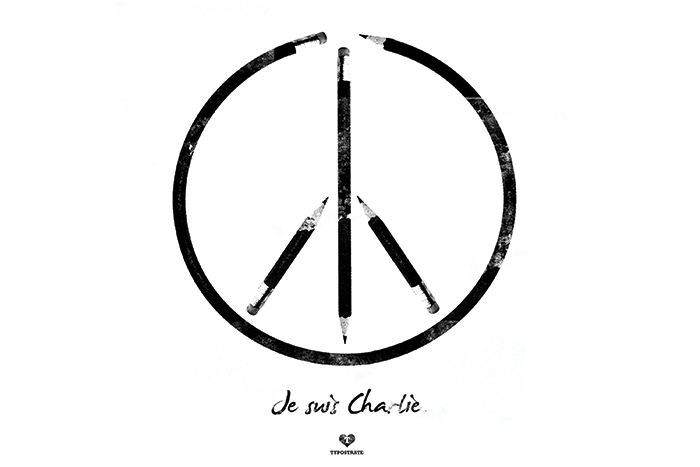Closing Thoughts: Je Suis ...

by Roger Harris ’77
I’m in Paris on average once a week. I have a bicycle there, an old rusty 10-speed locked up on the street. So I get around, and I’ve come to know the city well—its streets, its parks, its people. Like most Americans, on Jan. 7, I woke up to the news of the massacre at the Charlie Hebdo office. “Breaking News,” “Developing Story,” “Paris Under Siege.” U.S. news agencies in overdrive. I spent way too much time watching the images of this murderous attack and brazen getaway. The on-air mention of Boulevard Richard Lenoir, Porte de Vincennes and Montrouge: It all touched a nerve.
By the next day the killers were killed, having left 20 Parisians dead and 11 badly wounded. I emailed several different people I’ve befriended in Paris, expressing my empathy. To a person, they responded with heartfelt gratitude. This ordeal has been big in Paris. The residents are shaken; they’re moved.
My first trip to Paris after the attacks was a Sunday morning arrival on Jan. 11—the day of the Unity Rally. Despite warnings from my employer and wife to stay away from large gatherings and demonstrations, I was going. We arrived at Charles de Gaulle Airport, where the normally cheery agents and mechanics were quiet and sober. On the way to the hotel, passing the Porte de Vincennes, our Senegalese driver made an announcement of sorts in his broken English, saying that we were “passing within a few blocks of the Hyper Cacher market, where four hostages were killed. Rest in peace.” Upon arrival at the hotel, I thanked him, in my broken French, for pointing it out to us.
After a nap, I turned on the TV to see François Hollande, Angela Merkel, Benjamin Netanyahu, Mahmoud Abbas and others assembling to lead the walk. Once they started, I bicycled the 20 minutes over to Boulevard Voltaire and was able to lock my bike within a couple blocks of the march.
Wherever I went, sidewalks were full of people; kids, teens, parents, grandparents, many clutching pens or pencils as a form of protest, and many holding placards. So many sad and resolute faces. There were as many people standing along the sidewalks as there were walking in protest. I did both—I somehow felt that I should walk too, partly to get the vibe but also to show my support. The rally was incredible. Enormous but calm, peaceful and quite serious. Some counts say as many as 2 million people participated.
The outrage has several components: the free-speech element, the fundamentalist vs. mainstream Islam element and, of course, the Muslim/ Jewish element. The biggest story seems to be the free speech one—Je suis Charlie. But I also saw quite a few people (many of them Muslim) who had placards reading Je suis juif. Others proclaimed Je suis Ahmed—the Muslim policeman shot and killed trying to defend the office of Charlie Hebdo. It’s a complex message, but each and every one was a cry for more tolerance. Later, in the media, it was heartening to hear imams speaking out against the killings and disassociating Islam from extremism.
That evening I went to a couple familiar watering holes with my copilot, where everyone was pretty somber but still eager to talk, with even a hint of optimism. After such a massive outpouring, there was a real sense that this could be a turning point—that perhaps the world will come together to realize the futility of violence. Perhaps.
Roger Harris ’77 studied contemporary Latin American literature, mostly with Professor Arturo Fox, and earned a B.A. in Spanish with a certificate in Latin American studies. After Dickinson he learned to fly airplanes and is now in his 30th year at American Airlines.
Read more from the spring 2015 issue of Dickinson Magazine.
Learn more
Published April 14, 2015